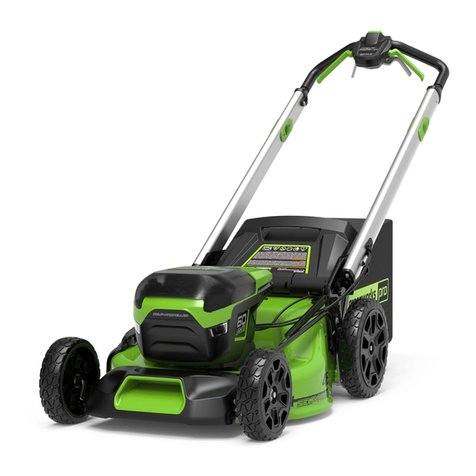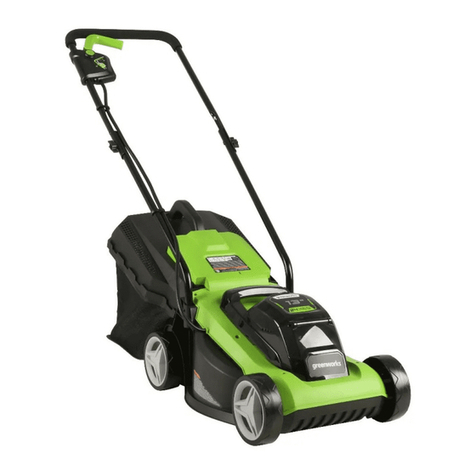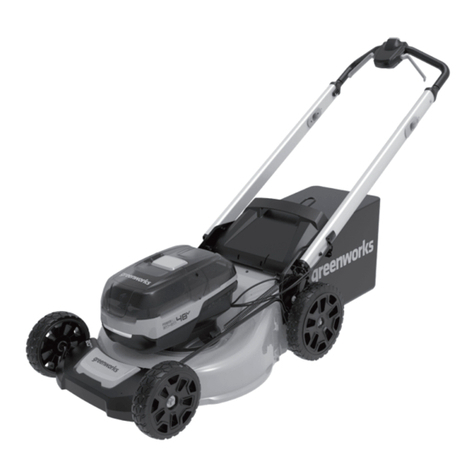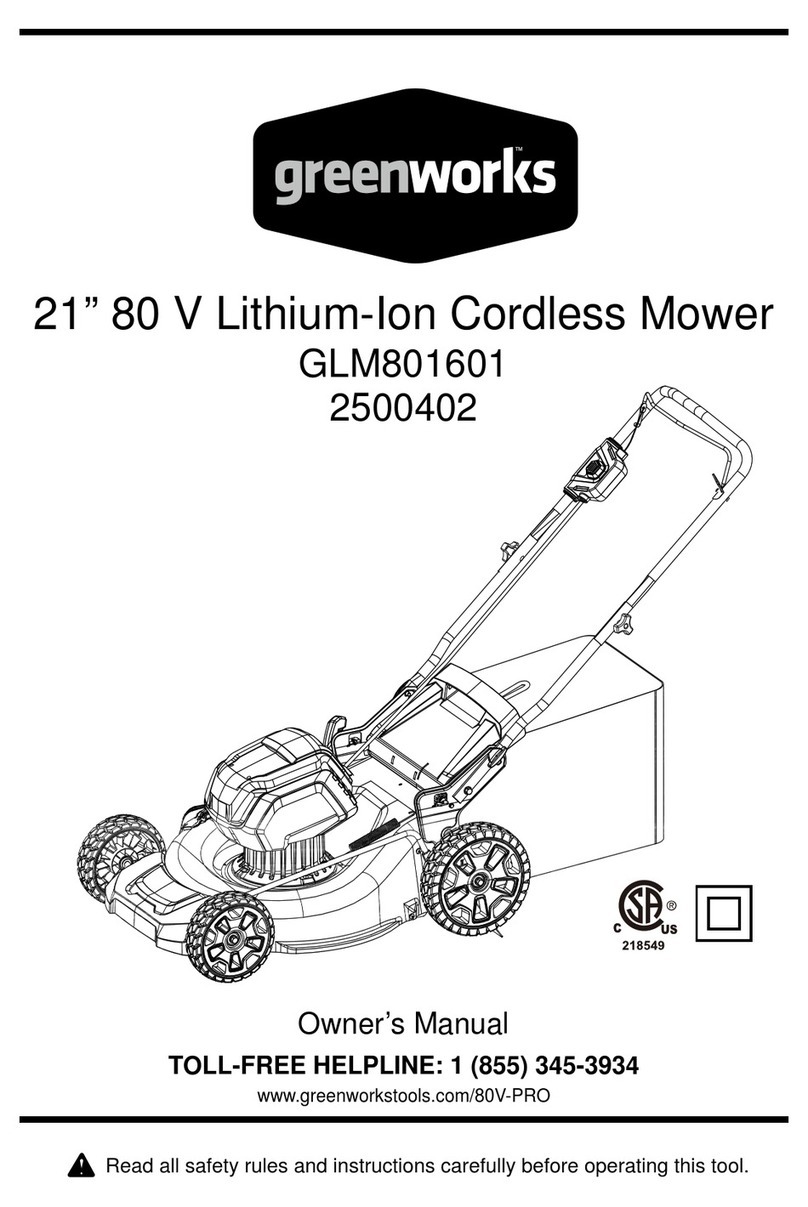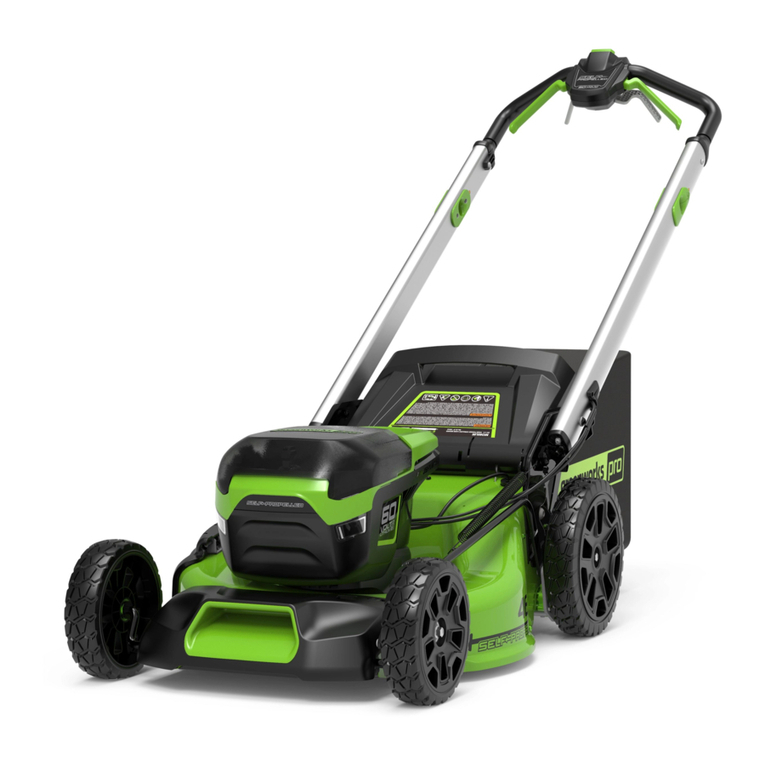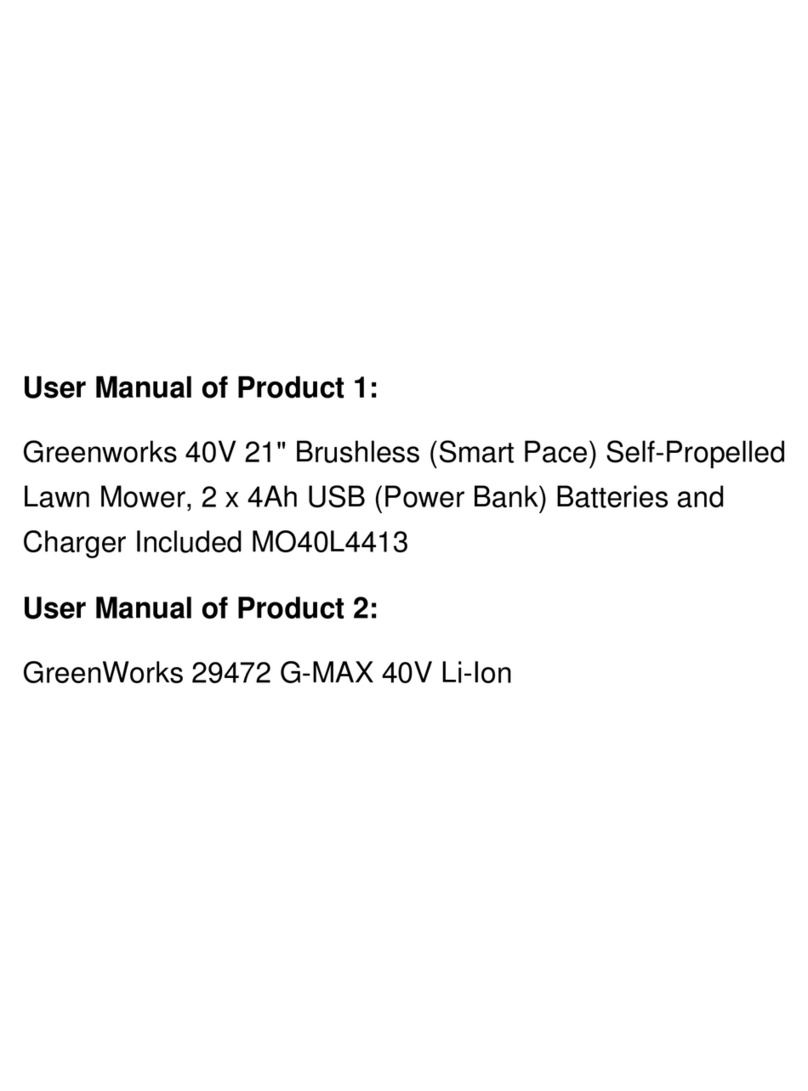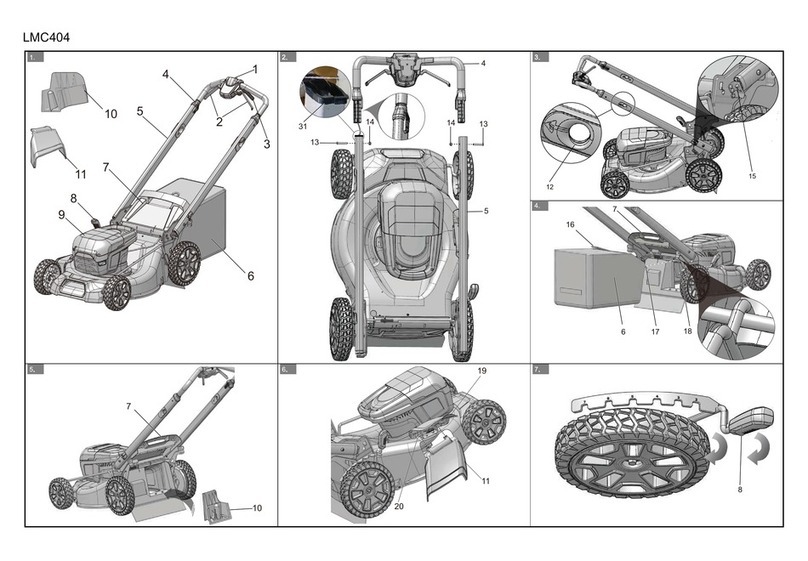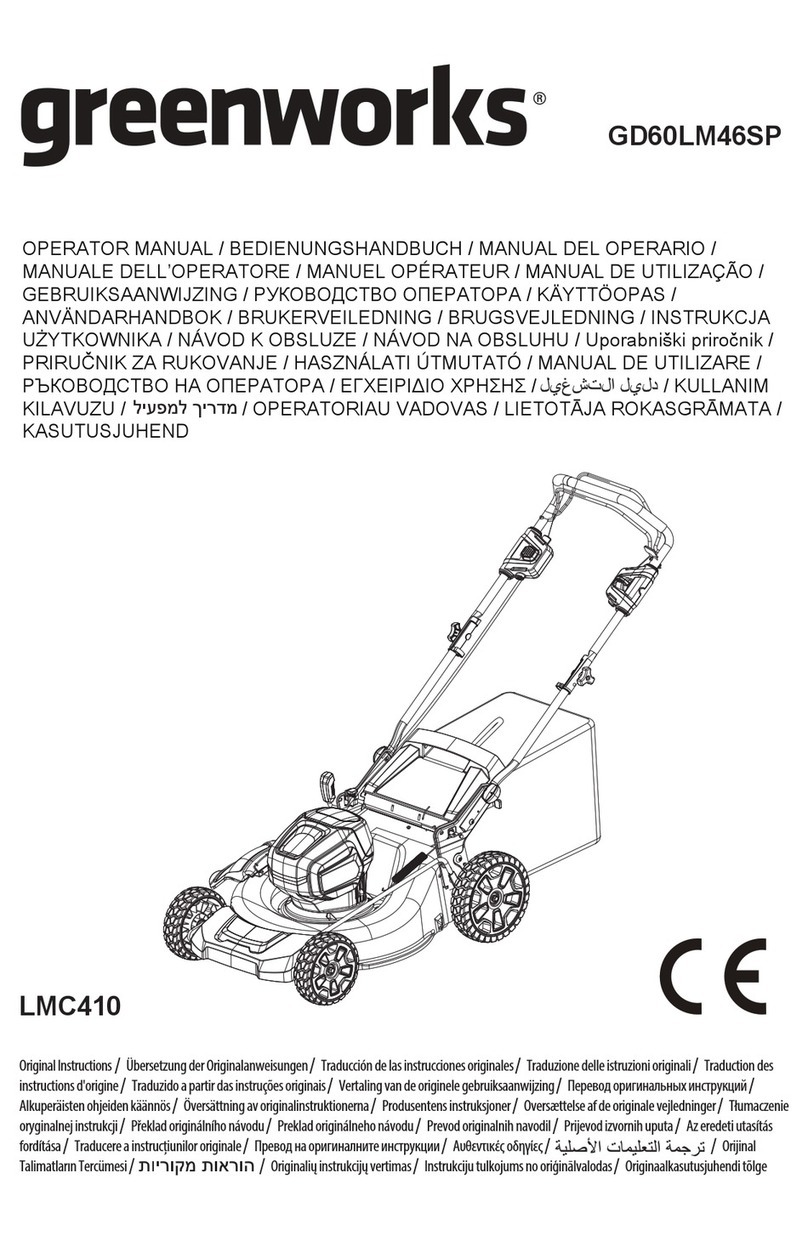
6
SAFETY INFORMATION
MACHINE
• Never operate a poorly maintained machine.
• Always keep safety shields and covers in place.
• Follow daily and weekly checklists, making sure electrical connections are secured and bolts are
tightened.
• Replace damaged parts immediately.
• Never operate mower without a proper trail shield, discharge cover, switch control, or other safety
device in place and in working order. Do not operate the mower with damaged safety devices; doing
so can result in injury.
• Repair or replace any damaged components before restarting and operating the lawnmower.
• Inspect lawnmower cord periodically and if damaged, have it repaired by an authorized service
facility.
• Only use approved replacement parts.
MOWING AREA
• Before mowing any area, thoroughly inspect the area for any hazards. Walk the area to ensure there
is adequate traction and no holes, drop-offs, or hidden objects that could cause issues. Clear the
area of objects such as rocks, wire, toys, etc., which could be thrown by the blades.
• Be sure the area is clear of bystanders before operating. Stop machine if anyone enters the area.
• Plan your mowing pattern in such a way as to avoid discharging material toward roads, sidewalks,
bystanders, vehicles, windows, etc. Do not discharge material against a wall or obstruction. Doing so
may cause the discharged material to ricochet back toward the operator.
• Do not mow anything but grasses.
• Stop the blades when crossing dirt, gravel, or paved surfaces.
• Avoid dangerous environments. Do not operate the mower in the rain or in wet or damp grass. To
reduce the risk of electric shock, do not expose to water or operate on wet ground.
MOWING
• For riding mower models, always remain seated while operating machine.
• Do not operate on inclines greater than 15 degrees.
• Mow only in daylight or in good articial light. Never rush a mowing job.
• Never attempt high-speed maneuvering, especially in crowded, congested areas or on slopes.
• Do not operate within 100 ft. of people or animals. Do not mow when children or others are around.
• Look down and behind before and while moving backwards.
• Slow down before turning.
• Do not mow in reverse unless absolutely necessary.
• When moving in reverse, SLOWLY pull right and left Drive Control Levers rearward and avoid sudden
movements. Rapid movement of the Drive Control Levers in either direction could result in a reaction
of the machine that can cause serious injury.
• Do not put hands or feet near rotating parts or under the cutting deck. Contact with the blade can
amputate hands and feet.
• If the mower starts to vibrate excessively, stop the motor and check for the cause immediately.
Excessive vibration is generally a sign the mower is not functioning properly.
• Stop the motor and wait until the blade comes to a complete stop before unclogging the chute. The
cutting blade will continue to rotate for a few seconds after the motor is shut off. Do not place any
part of your body in the blade area until you are sure that the blade has stopped rotating.
• Disengage blade(s) when not mowing. Shut off engine and wait for all parts to come to a complete
stop before cleaning the machine or unclogging the discharge guard.
• If lawnmower strikes a foreign objects, stop the machine, rotate the ignition switch to "OFF" position,
then, if it is safe, inspect for damage.
